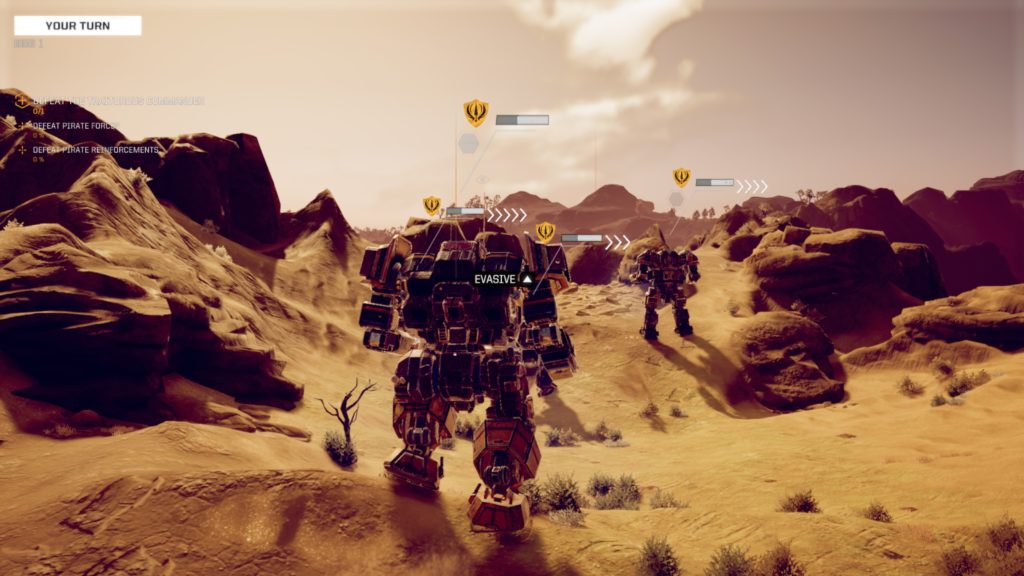
It’s embarrassing how late I am in playing games and in this case, it’s not even because I waited for it to go to discount. I was actually a Kickstarter backer on this one but kept putting off actually playing it, at first due to the many complaints and later balance changes, and later just because I had other games to get to first. It just goes to show that there really is no point to me buying new games at full price.
Though I remember salivating over the boxed sets on a shelf as a boy and I’ve a few video games that are part of the franchise, I don’t consider myself to be a fan and used to know very little about this world. I learned a lot more about it only recently after reading a popular piece of fanfiction. Honestly the setting is plain silly being basically feudalism in space and wars being fought with impractical giant robots, plus the old rigmarole about how ancient technology is too advanced for modern people to replicate. The story of the campaign here has all of that in spades and isn’t to my liking at all. Still, it’s serviceable and my favorite part of it is that though your primary employer in it espouses heroic and noble ideals, it still sounds like propaganda and I came away feeling that there are no good guys or bad guys here. You’re just mercenaries fighting for the money.
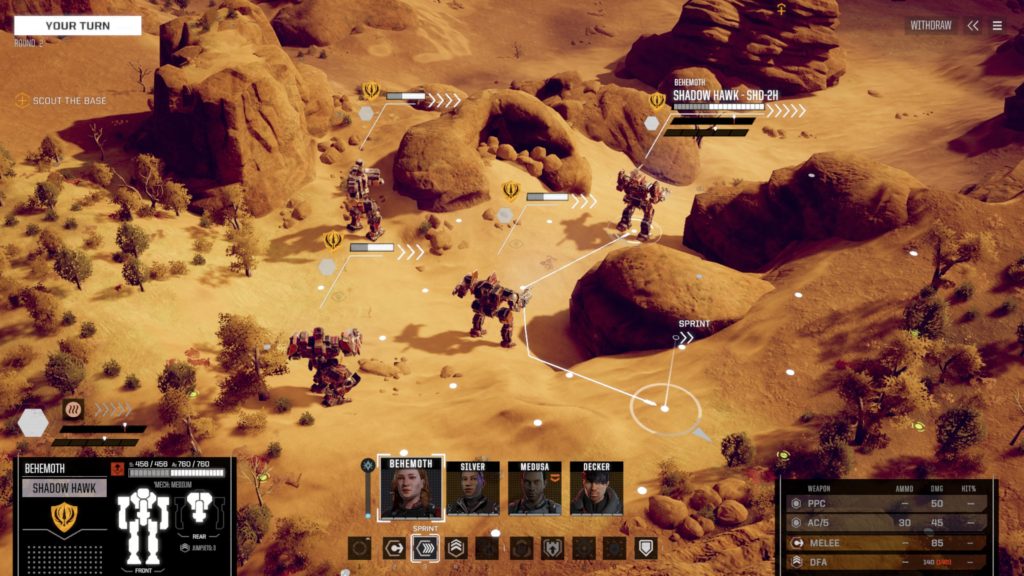
Anyway, that’s the premise. For some unconvincing reason, you’re in charge of a mercenary company that flies from system to system, performing combat missions with a lance of Battlemechs. You use the money and salvage that you earn to repair battle damage, upgrade your mechs and ship, pay salaries of your pilots and so on. There are random events which make the shipboard in-between time a little more interesting and this is also when you refit your mechs with your chosen loadouts. Keep in mind that everything costs time and money. Repairing and refitting mechs, healing injured pilots, travelling from one star system to another, uses up time. You can also shop for new mech components, hire new pilots, all of the usual maintenance operations.
The meat of the game is the turn-based tactical combat when you’re doing missions. Unlike most such games, you’re commanding giant robots here, not soldiers, so you won’t be cowering behind cover. Each mech can also be equipped with an entire arsenal of weapons. There are four categories of weapons: energy weapons, ballistics, missiles and support weapons, all with differing characteristics. There are mechanics that are unique here. Weapons produce heat and too much of it can force your mech to shutdown and damage itself. There’s a stability measure which determines how close your mech is to being knocked around so much that it falls down. Mechs which have moved a long distance in a turn gain an evasion rating which makes it harder to hit and certain pilots’ skills and being in a forest for example can reduce incoming damage. Unlike humans, individual parts of a mech can be damaged or destroyed before the whole thing blows up.
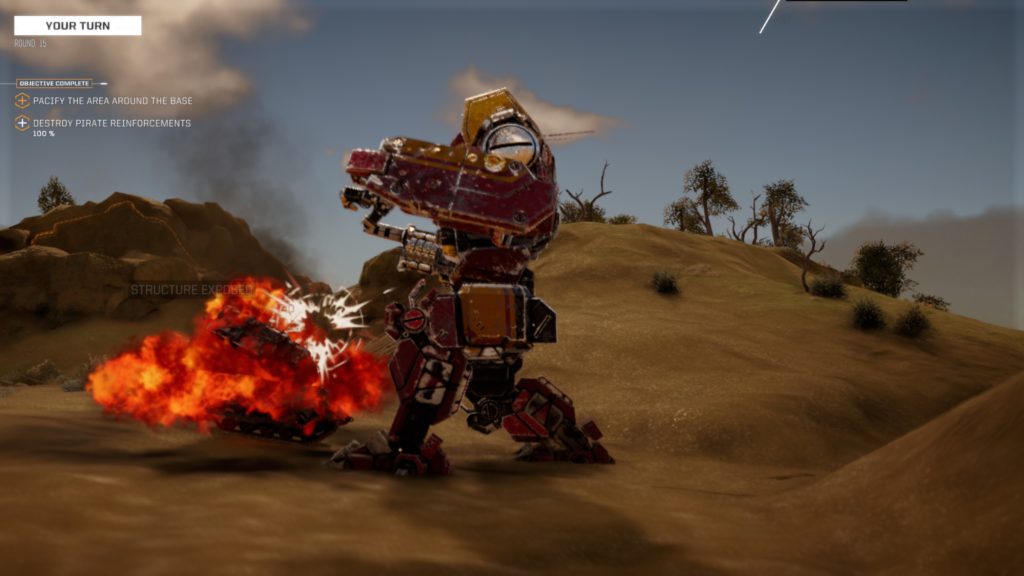
The interaction of all these mechanics is supposed to create a rich tactical ecosystem and it does succeed in creating a unique tactical challenge unlike most others. Since mechs are more like tanks than people, facing matters hugely. You want to keep hitting enemies in the same spot while keeping your weakened areas away from enemy attacks. The initiative system favors smaller mechs which get to act first. You need to strike a balance between overall damage versus focused damage on one area. A multitude of lasers for example does much more damage but scattered over multiple areas while a single powerful cannon does less, but all of it would be concentrated in one area, greatly increasing the chance of punching through armor and destroying a component. There’s also absolutely no healing in this game. Even the toughest mech will eventually get grounded down by attrition so you’d want to try to distribute damage across your mechs.
That’s all well and good and great fun as you learn the system. But in practice, once you understand how things work and especially once you’re able to move on to heavy and assault class mechs which allow you to specialize more effectively, everyone pretty much hits on the same strategy and repeats the same thing over and over again. You basically want to exploit the stability mechanic to knock down a targeted enemy mech as quickly as possible. Then once it’s down, everyone else focus fires on it to destroy it while it’s vulnerable. Move your own mechs around as needed to soak up enemy fire. Rinse and repeat. The key to this is long-range missiles, or LRMs for short. They’re clearly the kings of the battlefield in this game, being so long ranged that they reach practically the entire map so long as another mech in your team has a visual on the enemy. They’re not great at actually killing mechs as their damage is spread across the entire mech but they excel at knocking them down and since they can do that from anywhere, you can even skimp on the armor for them.
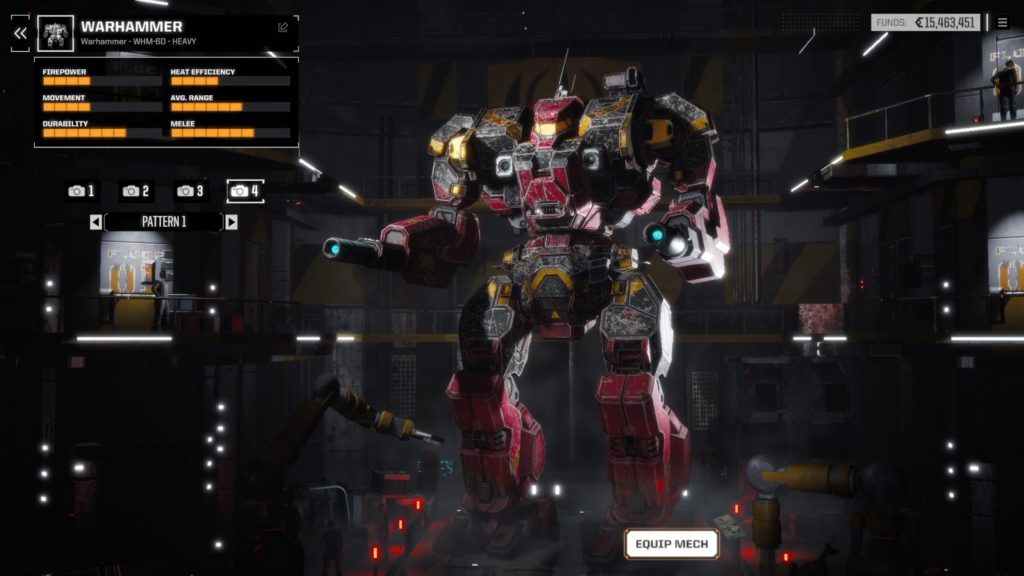
Sure, there are considerations like heat management. So you end up keeping a set of mechs for cool planets and another set for hot ones. Even things like evasion end up not mattering much eventually. At the end of the game, every pilot has skills that are so high that their accuracy is pretty good no matter what. The main problem is that your lance is limited to just four mechs. This means that you always want to bring the four heaviest, most powerful mechs you have. If you were limited to a fixed tonnage for example with any number of mechs, bringing a lighter mech as a spotter or flanker for example might be viable. But since you can only ever bring four, it’s just not worth it to give up a spot for a heavy mech that is crammed with weapons. The only exceptions are when the mission limits the maximum tonnage of each mech anyway or when the objectives call for fast movement. In the campaign story missions, you sometimes need at least one fast mech in order to have any chance of completing some of the optional objectives.
The game exacerbates this sense of needing to do the same things over and over again by making progress too much of a grind. At default settings, you need to collect three mech parts to build a complete mech. The shop in each system also has a very limited selection of items in stock so you’ll often have to move from system to system to check out the mech parts and rare components they have. In the campaign, you can also spend money to upgrade the Argo, the unarmed ship you use to fly around in and carry your mechs. But many of the upgrades don’t matter much, such as being able to have a bay large enough to host many mechs and a roster of many pilots when you can only ever field four at a time. The sense of imbalance extends to the pilot’s skills as well. Even after being nerfed, it seems to be that the two abilities of the Guts tree are the best. Bulwark reduces the damage that you take and Coolant Vent gets rid of heat which effectively increases your firepower. Again, if you had more mechs to play with, it may be interesting to have a lighter evasive one with the appropriate piloting abilities and Sensor Lock to enable your LRM boats to target enemies from out of line of sight.
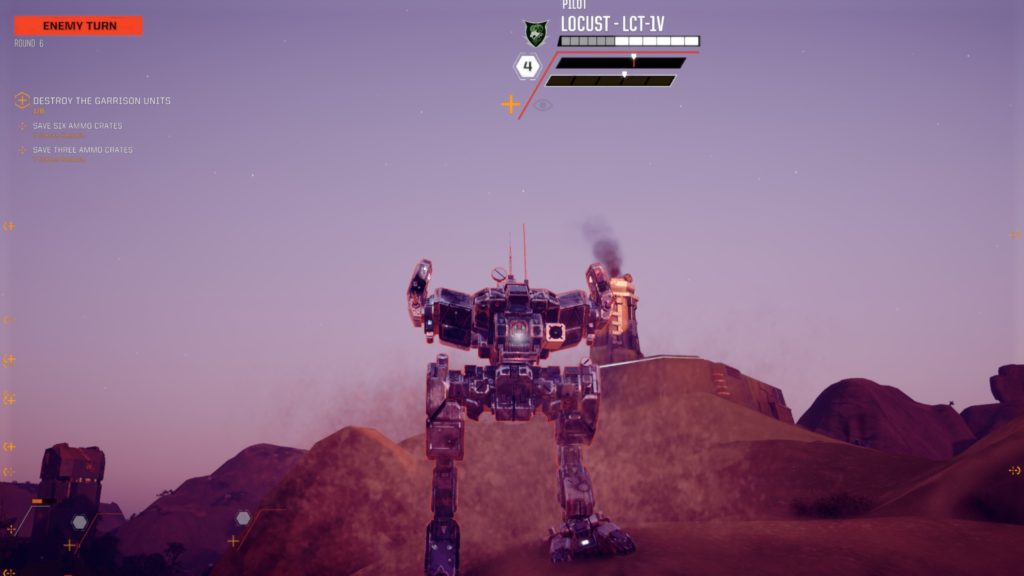
For me, the upshot is that this is a fun game that rather overstays its welcome after a while. The campaign is especially frustrating in that the starmap looks so big but most of it is locked off and inaccessible until after the campaign is over. By then I basically have all the heavy and assault mechs I want but don’t feel much motivation for continuing the game. Also, it’s kind of frustrating that most of the game has a predictable difficulty curve but then it likes to dramatically spike up the difficulty sometimes. For example, you might start a mission and engage with an enemy lance and then immediately a lance of enemy reinforcements show up nowhere in a position to flank you. As other players online say, that’s what the withdraw from mission button is for as it’s not worth the cost of repairing heavy damage and possibly losing rare and irreplaceable components in order to win an impossible battle. Production-wise, the game is pretty enough but the loading times and a user interface that feels laggy makes it annoying after a while. Not anything game breaking but just quality of life issues.
Finally all this is based on playing the campaign with no DLCs. It might be interesting to play the career mode once I have all of the DLCs but I notice that they are quite expensive. I’ll keep a lookout for when they go for sale but even if I end up never coming back to this game, I’d still be okay with that.